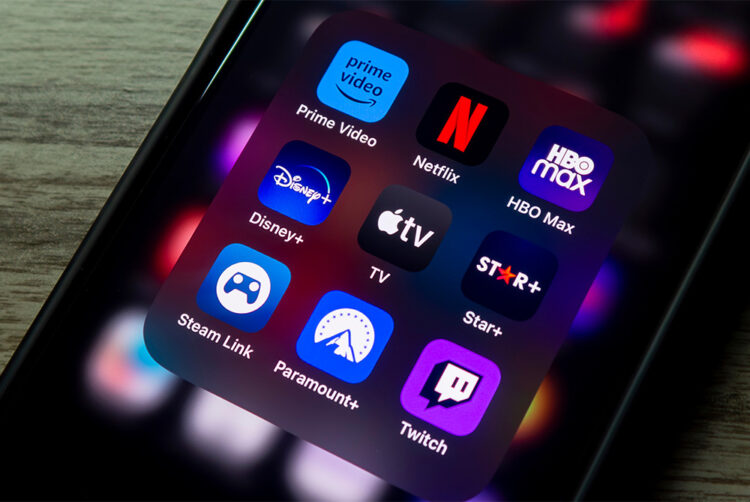Are streamers’ ‘aggressive’ cost-cutting plans paying off?

Warner Bros Discovery and Disney’s latest earnings calls both emphasised cost-cutting measures and moving to streaming profitability in 2024.
Disney CEO Bob Iger said the entertainment giant was on track to achieve $7.5bn in cost reductions, approximately $2bn more than targeted earlier this year, as it continues to “aggressively” manage its cost base.
This, he said, had helped Disney “improve operating results” of its combined streaming businesses, namely ESPN+, Hulu and Disney+, by approximately $1.4bn from 2022 to 2023.
Disney said it expected its combined streaming businesses will “reach profitability” in Q4 2024 but remarked “progress may not look linear from quarter to quarter”.
Specifically, Kevin Lansberry, Disney’s interim chief financial officer, said the company expects “a modest sequential decline” next quarter but “upward momentum” later in the fiscal year driven by the full impact of price increases, the launch of the ad tier internationally and subscriber growth.
Meanwhile, Warner Bros Discovery announced its free cash flow was a positive $2.1bn for the quarter compared to negative $200m last year, which was the first full quarter for the company following its merger.
The company also announced it had repaid $2.4bn in debt during Q3, leaving $45.3bn of gross debt. This is compared to $53bn in August 2022.
Gunnar Wiedenfels, chief financial officer at Warner Bros Discovery, said the company’s plan is to continue to reduce debt as it generates cash in order to reduce net leverage — calculated by dividing net debt by the sum of the most recent four quarters of adjusted Ebitda (its measure of profit) — to “comfortably below 4.0x at year end as previously guided.”
He added: “I am proud that WBD will exit this year with a fundamentally improved financial profile as compared to the beginning of this year regarding command and control, cost structure, profitability and cash flow generation and the balance sheet.”
On direct-to-consumer streaming, Wiedenfels said its team had done “a remarkable job improving the quality and financial profile” of its streaming business.
He explained: “Only 19 months into the combined operation as Warner Bros Discovery and a few months after the launch of Max, we are now on track to at least break even or even profitable across the D2C segment to swing up approximately $2bn versus last year and very well ahead of our own plan. This is an incredibly valuable asset and provides a strong vantage point for our path to long-term sustainable growth.”
The company did, however, experience a loss of 700,000 subscribers to its direct-to-consumer offerings, which include the recently rebranded Max.
Analysis: distinct strategies for more sustainable growth
Both companies had revenues and costs affected by the long-term writers’ and actors strikes, and on top of this both earnings called out an uncertain ad market and declining linear market. However, both companies have slightly different strategies going forward as to how to secure stable and sustainable growth for their company portfolios, and streaming services.
For Disney, which attracted 7 million subscribers in the quarter to Disney+, half of which in the US were for the new ad tier, cost-cutting through “important restructuring and cost efficiency work” over the last year has allowed it to “move beyond fixing” and begin building again, its CEO Iger said.
Going forward, four “key building opportunities” that will be “central” to Disney’s success, according to its leadership, are: significant and sustained profitability in its streaming businesses, building ESPN into “the preeminent digital sports platform”, improving output and economics of film studios and “turbocharging growth” in parks and experience businesses.
Disney also mentioned the importance of “big title” or “pay window” films to compete with Netflix, which Iger called “the gold standard” on the call. Films like Elemental, Guardians of the Galaxy 3 and Little Mermaid were recent examples.
Iger said: “[B]y leaning more into some of those films and while we improve the quality of them, gives us the ability to dial back a bit on some of the spending and investment in series. And that blend of spending between films and series, we believe, gives an opportunity to increase our margins and grow the business.”
On the other hand, for Warner Bros. Discovery, “maintaining cost discipline” was more of a prominent priority.
While Wiedenfels wants to reduce net leverage “comfortably below 4.0x at year end,” TMT analyst and investor Alex DeGroote previously advised The Media Leader that “the ratio should not be more than 3x,” meaning Warner Bros Discovery still has a long ways to go to improve its debt situation.
Wiedenfels said that by the end of 2023 it will have realised $4bn in “cost synergies” and will have already implemented initiatives to deliver more than $5bn through 2024 and beyond.
On top of this cost-cutting, the priorities were strong cash generation, significantly reduced leverage, its games business, turning the streaming businesses profitable, and driving franchise returns.
The company also sees increased opportunity through its gaming segment. President and CEO David Zaslav called gaming “a critical differentiator and a real growth opportunity”.
Zaslav said he would focus on adapting current game development strategies away from the standard three-to-four-year development cycle for console and PC releases and toward always-on experiences with live services and free-to-play extensions that can be monetised through microtransactions.



